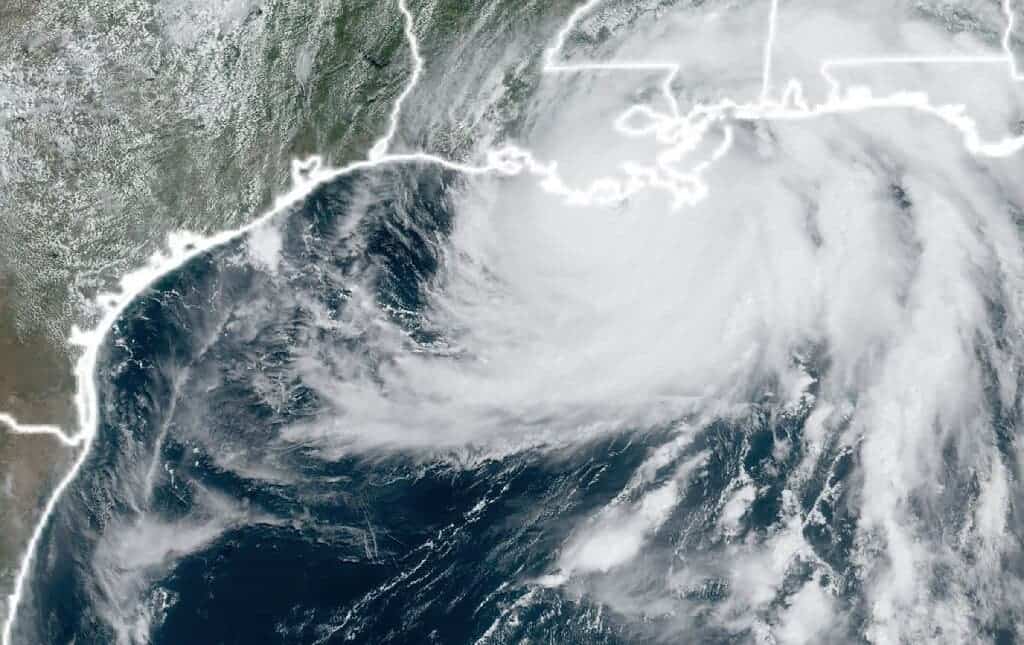After plunging New Orleans into darkness over the weekend, Hurricane Ida slammed into Louisiana on the 16th anniversary of Hurricane Katrina – the costliest storm in US history. Ida arrived on the Louisiana coast as a Category 4 storm but has already weakened to a Category 1, with flash flooding now being the primary hazard.

On its latest advisory, the National Hurricane Center said Ida is now a tropical storm and is affecting large parts of southern Louisiana with dangerous storm surge, damaging winds, and flash flooding. The storm is moving at 13 km/h (8 mph) and is forecasted to progress into southwestern and then northeastern Mississippi.
Ida took out the power in all New Orleans, with about one million people in Louisiana without power too, according to the tracker PowerOutage. On Twitter, New Orleans major Latoya Cantrell warned people to remain inside. Work is currently being done to get the electricity back to the pumping stations that are used to control flooding.
The National Weather Service issued warnings of flash floods and storm surges for several areas, including the towns of LaPlace, Luling, and Destrehan, west of New Orleans, asking residents to move to higher ground. New Orleans Mayor Tim Kerner said the town’s levees were breached, which he described as “total devastation.”
🧵 Hurricane #Ida has caused catastrophic damage in Lafourche Parish. Deputies have been deployed in full force today responding to emergencies, searching for those who need help, and helping clear roads. Curfew remains in effect and will be STRICTLY enforced. 1/4 pic.twitter.com/3AW49AG1ia
— Lafourche Parish Sheriff’s Office (@LafourcheSO) August 30, 2021
President Joe Biden has declared a major disaster for Louisiana. This gives the state access to federal aid to supplement state and local recovery efforts. Biden visited the Federal Emergency Management Agency (FEMA) headquarters in Washington and said Ida was a “life-threatening” storm that was likely to be “devastating” for the affected states.
One person has died from a falling tree in Prairieville, which is 60 miles northwest of New Orleans. Louisiana Governor John Edwards said Ida could become the most powerful storm to hit the state since 1850, claiming it would be a “very serious test” to the emergency systems. Hundreds have been evacuated from their homes, he added.
As it now deals with Ida, Louisiana still has fresh memories of Katrina, which made landfall on August 29, 2005. The storm caused 1,800 deaths and $125 billion of dollars in damage. Katrina was a Category 5 Hurricane and particularly affected New Orleans, where flooding causes most of the loss of lives. 80% of the city was flooded for weeks.
Ida is the 17th storm that has hit the United States in the last two years, Jeff Masters, a former NOAA meteorologist, told AP. So far this year, storms Elsa, Danny, Claudette, Elsa, Fred and Henri have hit the country – all tropical storms when making landfall. This number is only exceeded by last year’s record of 11 landfalls, Masters added.
Hurricanes and climate change
A hurricane is basically a type of tropical cyclone – a low-pressure system that happens in the tropics or subtropics. Stronger systems are called hurricanes or typhoons, while weaker ones are called tropical storms. The National Hurricane Center categorizes hurricanes based on their wind speed, from Category 1 to Category 5 (the strongest).
There’s now substantial evidence showing that climate change will intensify the intensity and impacts of hurricanes. As water temperatures get warmer, more heat energy is available, increasing the potential for hurricanes to develop. Category 4 and Category 5 we’ll get more common, NOAA said, with wind speeds expected to increase by 10%.
At the same time, scientists believe that sea-level rise will make hurricanes more damaging. Sea level is expected to increase by at least 12 inches (0.3 meters) by 2100 on a low-emission scenario, amplifying coastal storm surge. Hurricane Sandy in 2012 is a recent example, with sea-level rise intensifying its damages due to coastal flooding.
Reducing greenhouse gas emissions is the best way forward to reduce the risk of hurricanes in the future. Cities and towns can also increase their resilience by elevating vulnerable buildings, designing structures to be more resilient to high winds, preserving dunes and reefs to absorb storm surges, and properly preparing for a storm’s arrival.









